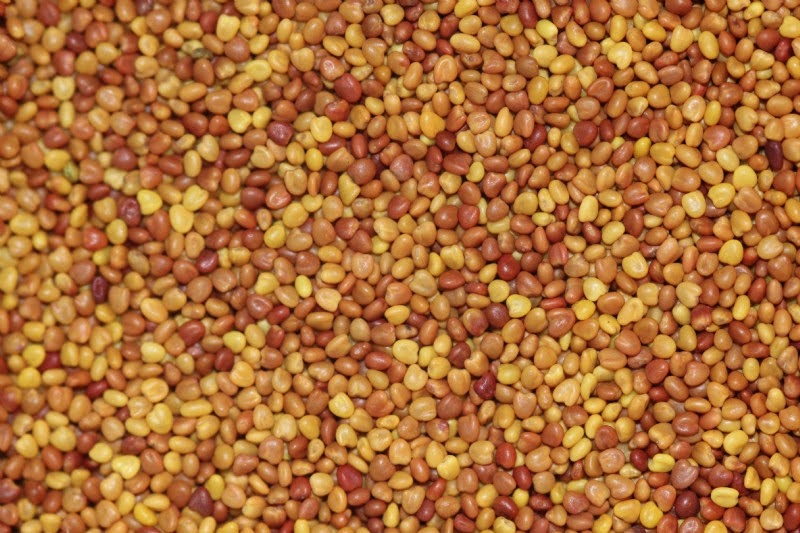







Why include white clover in my pasture?
White clover is a perennial forage legume. It has the ability to fix up to 180kg/ha nitrogen from the atmosphere, decreasing the need for N-fertiliser. Research has shown that growing clover in a mix with grass actually fixes more nitrogen, where grass mops up excess nitrogen and mineral reserves from previous fertiliser use. Furthermore, white clover has a high protein (25-27% CP) and water soluble carbohydrate (WSC) content. With its creeping stolons, it’s a useful component for filling in the base of tetraploid ryegrass swards for weed suppression and improvement of soil porosity and density, making it a popular addition to grass pastures for both livestock grazing and cutting for conservation.
Adding a legume into a grass mix can be financially rewarded through the SFI action NUM2 (legumes on improved grass), as long as they are managed in a way that achieves the action's aims.
Which variety should I choose?
White clover varieties are categorised according to their leaf size, the general rule of thumb is the smaller the leaf size, the more tolerant it is to close grazing.
- Small leaved varieties (eg. S184, Rivendel, Aberace) is lower yielding but extremely persistent, they fill the base of the sward and can be persistently grazed hard by sheep.
- Medium leaved varieties (eg. AberSwan, AberDai) offer higher yields than smaller leaved varieties. They are also highly competitive and persistent, and provide good early spring growth.
- Large leaved varieties (eg. Violin, Alice) are the highest yielding, but with the lowest persistence and do not survive well when closely grazed. These are therefore best sown in cutting or cattle grazing leys.
It is recommended to have a mixture of types for greater flexibility. For long term sheep or extensive cattle grazing, choose MIXOSC which contains a blend of small and medium varieties. For dairy grazing or cutting for conservation, choose MIXOSCD which contains medium and large varieties.
How should I prepare my paddock?
Prior to introducing white clover into your ley, there are some important points to consider to ensure maximum germination for a high quality cover:
- Soil nutrients: if N, P and K soil indices are below index 2, apply up to 50 kg/ha. Do not apply Nitrogen after the clover has established, as it inhibits atmospheric nitrogen fixation, and boosts grass growth therefore outcompeting and potentially swamping the newly establishing clover.
- pH levels: White clover grows best in pH 6.5, so consider liming if you have acidic soils.
- Drainage/soil compaction: White clover does not persist in heavily compacted or waterlogged soils, therefore a full reseed may need to be considered.
- Weed challenges: white clover is a broadleaf therefore reduces the options for herbicides, it is therefore best addressed prior to introducing clover to the sward.
- Soil temperature: compared to grass, clover requires warmer soil conditions; soil temperature needs to be consistently 7-8℃ to ensure germination.
How do I overseed clover into my paddock?
Heavily grazing/topping down the existing grass sward and taking multiple passes with a harrow is essential for creating a tilth, aim for 50% soil exposure. The sowing rate for a white clover overseed is 2kg/acre (5kg/ha). Although this sounds low, remember that clover seeds are tiny (under 2mm!) - there are approximately 1,600,000 seeds/kg. They must be sown at a maximum depth of 10mm. It’s for this reason it is important to prepare a fine, firm seedbed to ensure maximum soil-seed contact and avoid the seed being buried. Ideally broadcast the seed, followed by a light harrowing and a few passes with the rolls to press into the soil and consolidate the seedbed. A well-balanced grass and clover sward contains approximately 30% clover.
Date Posted: 23rd May 2024



